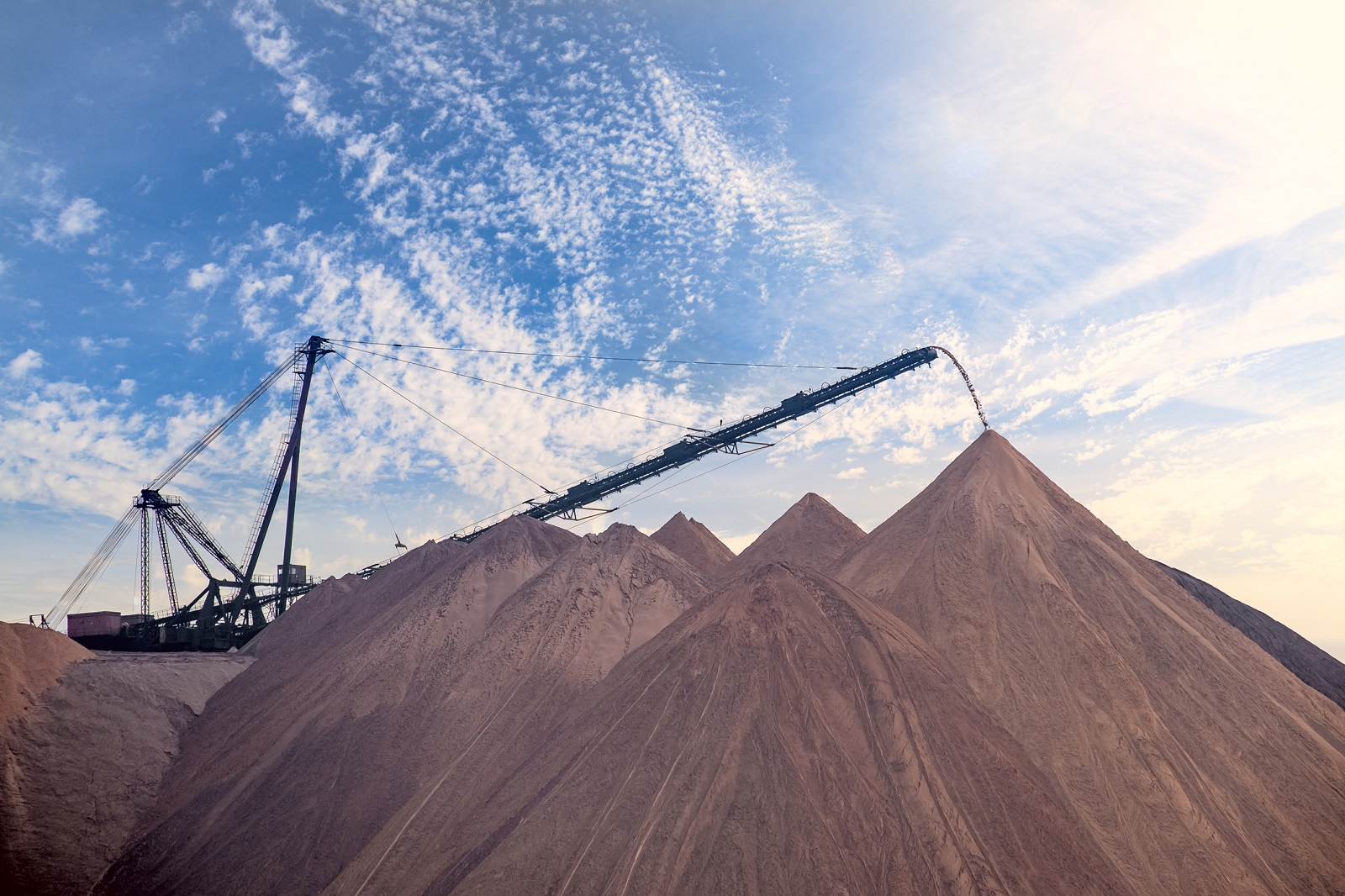The potash industry is experiencing a period of change as the world adapts to new economic realities, geopolitical tensions, and environmental considerations. Let’s take a look at the latest trends in potash pricing, supply chain disruptions, and the strategic movements of key industry players.
Global Potash Supply and Demand: Current Trends
The potash market, which is integral to global agriculture, has been impacted by recent geopolitical events. Russia’s invasion of Ukraine, coupled with Western sanctions, has disrupted the supply of potash from one of the world’s largest producers. Russia, historically responsible for a substantial portion of global potash production, has seen its exports curtailed, leading to a tightening of global supplies.
In 2023, the global consumption of potash increased to 37.1 million metric tons, a slight uptick from the previous year’s 35.7 million metric tons. This increase in demand, coupled with supply constraints, kept prices elevated through much of 2023. However, by mid-2023, prices began to normalize, with current rates hovering around $500 per ton, down from the $1,200 per ton observed at the height of the crisis.
The Role of Emerging Markets and Brazil’s Potash Ambitions
Brazil, a major player in global agriculture, is also the second-largest consumer of potash worldwide. The country relies heavily on imports to meet its potash needs, importing over 96% of its supply from countries like Canada, Russia, and Belarus. This dependency has made Brazil particularly vulnerable to the recent global supply chain disruptions.
In response to these vulnerabilities, Brazil is increasingly looking inward to secure its potash supply. The country’s agriculture sector is poised to benefit from domestic projects that could drastically reduce its reliance on imports. One such project is located in the heart of the Amazon: the Autazes Potash Project. This initiative, spearheaded by Brazil Potash, is expected to supply a significant portion of Brazil’s annual potash demand for the next three decades.
The global potash market has been further complicated by the geopolitical landscape. The conflict in Ukraine has not only reduced Russian exports but also prompted many countries to reevaluate their dependence on foreign fertilizers. With Russia being a major player, the reduction in supply has created a ripple effect across the global agriculture sector. Countries that once relied on consistent imports from Russia and Belarus have had to scramble for alternative sources, leading to fluctuations in both availability and pricing.
In the medium to long term, experts suggest that potash prices will stabilize as the market adjusts to the new supply-demand dynamics. However, the process of normalization will likely be gradual. The ongoing conflict and potential for further sanctions create an uncertain outlook, particularly for countries heavily reliant on imports.
Strategic Projects and Investments
Amidst these challenges, significant investments are being made to bolster global potash production. Major industry players, including BHP and Mosaic, are expanding their operations, with new projects expected to come online in the coming years. BHP, for instance, is investing billions into its Jansen project in Canada, which is expected to double its production capacity by the end of the decade.
These expansions are important as they will help offset the supply shortages caused by the disruptions in Russia and Belarus. Moreover, new projects are also being developed in countries like Brazil like the Autazes Potash Project, where the focus is on reducing import dependency and ensuring a stable domestic supply.
Environmental and Social Considerations in Potash Production
As the potash industry evolves, environmental and social governance (ESG) considerations have become increasingly important. The industry is under pressure to adopt more sustainable practices, particularly in regions with sensitive ecosystems, such as the Amazon. In Brazil, for instance, potash projects are now being designed with a focus on minimizing environmental impact and promoting community development.
The Autazes Potash Project is a prime example of this trend. The project has been developed with a commitment to sustainability, aiming to protect local ecosystems while providing economic opportunities for local communities. This approach not only aligns with global ESG standards but also enhances the project’s long-term viability by ensuring it garners local and international support.
Brazil’s Strategic Shift: Towards Potash Self-Sufficiency
Brazil’s strategic shift towards increasing domestic potash production is not just about securing supply; it’s also about economic resilience. By reducing its reliance on imports, Brazil can better control the costs of agricultural inputs, which is crucial for maintaining the competitiveness of its agricultural exports. The successful implementation of domestic projects like Autazes could serve as a model for other countries facing similar challenges.
These initiatives also have broader implications for global food security. As one of the world’s largest food producers, Brazil’s ability to secure its fertilizer supply directly impacts global food prices and availability. The ripple effects of Brazil achieving potash self-sufficiency could stabilize markets far beyond its borders.
The Future of Potash in a Changing World
The potash industry is at a crossroads, with significant challenges and opportunities to watch out for. The normalization of prices, while providing some relief, does not eliminate the underlying vulnerabilities exposed by recent geopolitical events. Countries like Brazil, with strategic initiatives such as the Autazes Potash Project, are positioning themselves to weather these disruptions and ultimately emerge stronger and more self-reliant.







